"Global Slavery Index 2014" that summarizes the actual situation of slave labor that remains even today

It is dominated by someone's possessions and exploited without the recognition of human rights or autonomyslaveIt is never a historical term, it can be said to be a social problem that exists also in the present age. "Walk Free Foundation (Walk Free Foundation)" aimed at improving this situation and resolving inhumane slave labor,WFF) "Global Slavery Index 2014 (Global Slavery Index 2014:GSI), But still in the whole worldApproximately 35.8 million peopleWas compelled for slavery labor and it was revealed that the most people in India are being forced into particular, in particular.
Global Slavery Index
http://www.globalslaveryindex.org/findings/

The WFF that conducted the survey is an organization headquartered in Australia, this time GSI will investigate the actual state of slave labor in various countries and regions of the world, not only to investigate the scale but also to improve the status quo by the state We are aiming to clarify the situation of our efforts.
The actual state of slavery labor is diverse, seeing cases such as fisherman (Thailand) to catch fish for processing, coal mining worker digging diamond (Congo), cotton picking (Uzbekistan), work sewing a soccer ball (India) In addition to that, boys and boyfriends acting on battle and extortion of prostitution are being carried out. International Labor Organization (International Labor Organization:ILO) Estimates that the profits arising from such forced labor will amount to as much as $ 150 billion annually (about 17.6 trillion yen).
The ranking representing the scale of the problem is as follows. If slave population is represented by the ratio of the whole population, Mauritania is the top that 4% of people in the whole population are being compelled to do slavery labor. Followed by 3.98% Uzbekistan, 2.30% Haiti, 1.36% Qatar and so on.
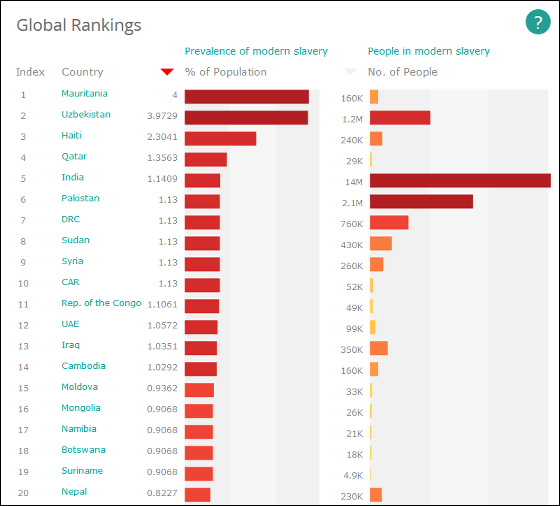
Here is a graph sorted by population. It is clear that India in the first place is treated as slave by 14 million people, which is 1.14% of the population. Followed by 3.2 million Chinese, 2.1 million Pakistan and 1.2 million Uzbekistan.
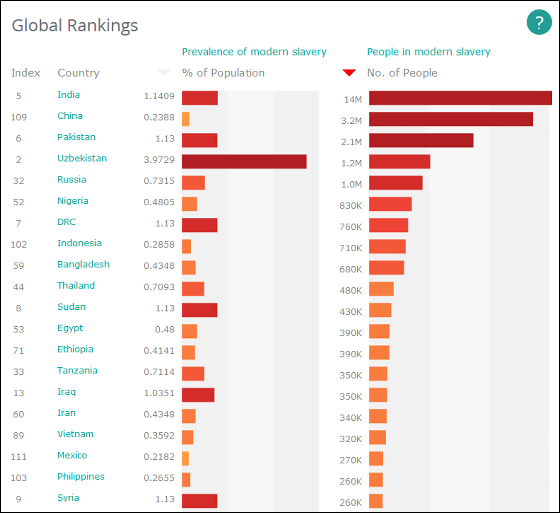
The ranking of Japan is 127 in 167 countries around the world. It is about 0.19% of the population, but I can not forget the fact that as many as 240,000 people are forcibly treated as slaves.
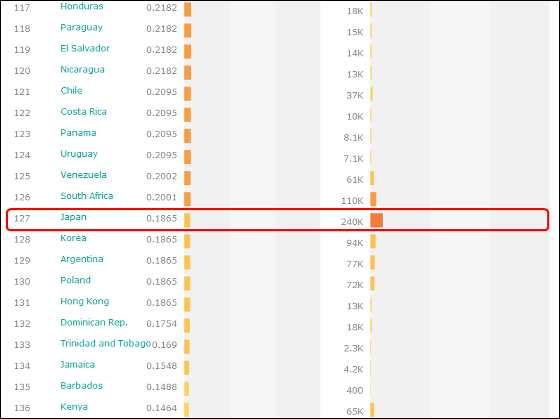
Here is the ranking of correspondence by each government. The darker the color of the circle, the higher the rating is. The best "AAA" was not applicable, but the next point "AA" followed by the Netherlands, followed by the "A" Sweden.
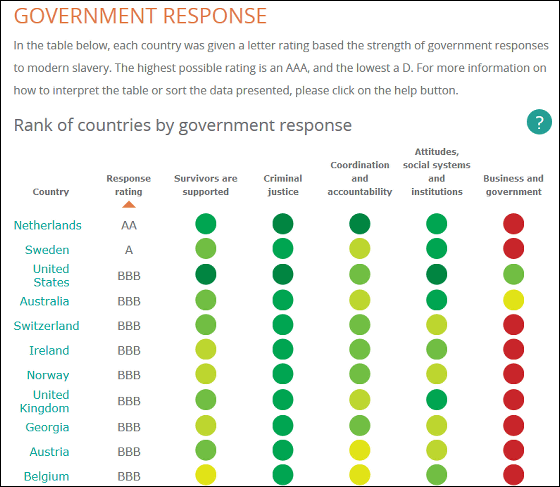
Japan's evaluation is "CCC", which is the fourth result from the bottom, second only to "D" → "C" → "CC" which is the lowest rank.
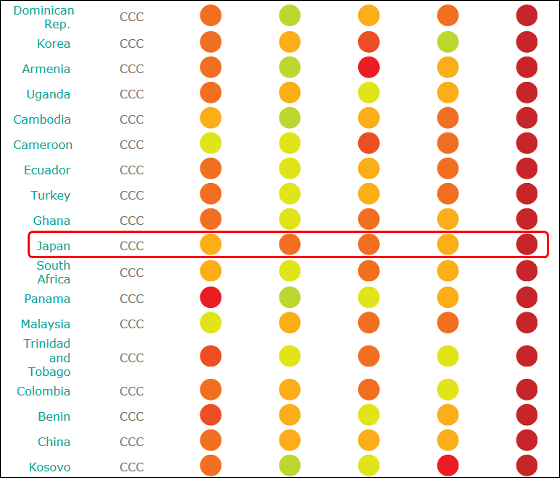
The worst one of "Vulnerability" (vulnerability) that judges the danger of slave labor on institutional and systematic basis is Somalia. Then Eritrea, Sudan, Yemen follow. "Dem. Rep. Korea" is about so-called North Korea.
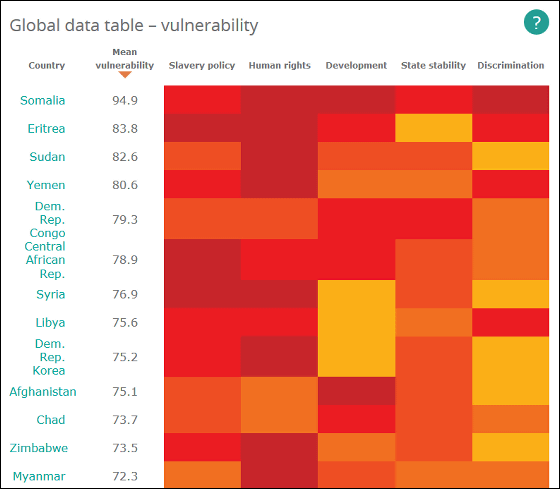
Japan ranked in a position to go slightly above Estonia, Korea, etc.
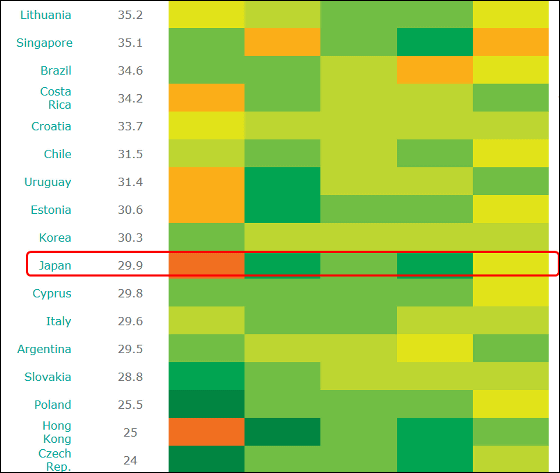
The country with the least danger was Norway.
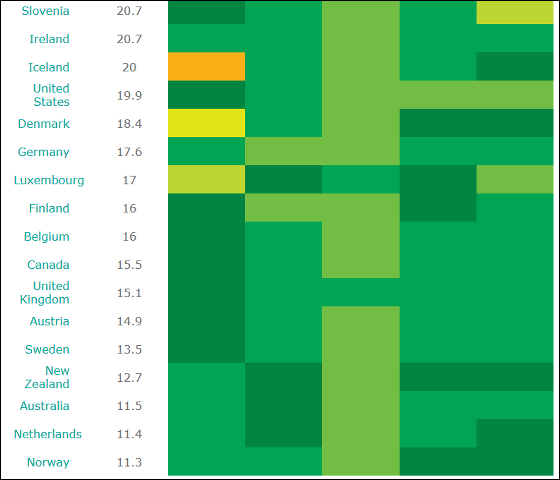
Incidentally,Site of GSI 2014It is also possible to check the results of interviews interactively. Clicking on the map at the top, you can see the statistical data of that country ......
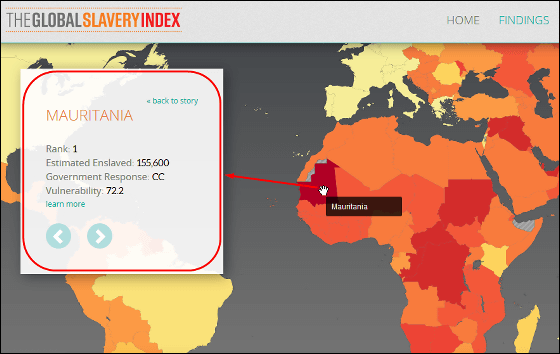
When items were changed, maps were painted separately so that they could visually grasp the data.
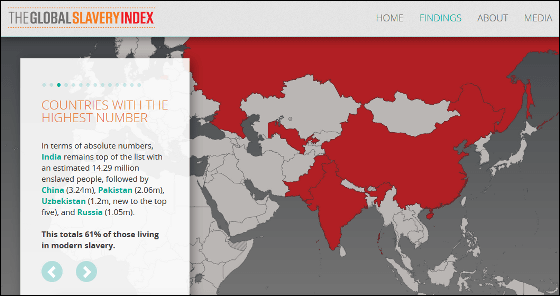
This survey, conducted in 167 countries around the world, revealed that 122 kinds of goods are manufactured by slave labor in at least 58 countries. The report of "Global Slavery Index 2014" can also be downloaded and viewed from the following link.
The Global Slavery Index 2014 - Global_Slavery_Index_2014_final_lowres.pdf
(PDF file)http://d3mj66ag90b5fy.cloudfront.net/wp-content/uploads/2014/11/Global_Slavery_Index_2014_final_lowres.pdf

Related Posts:
in Note, Posted by darkhorse_log







